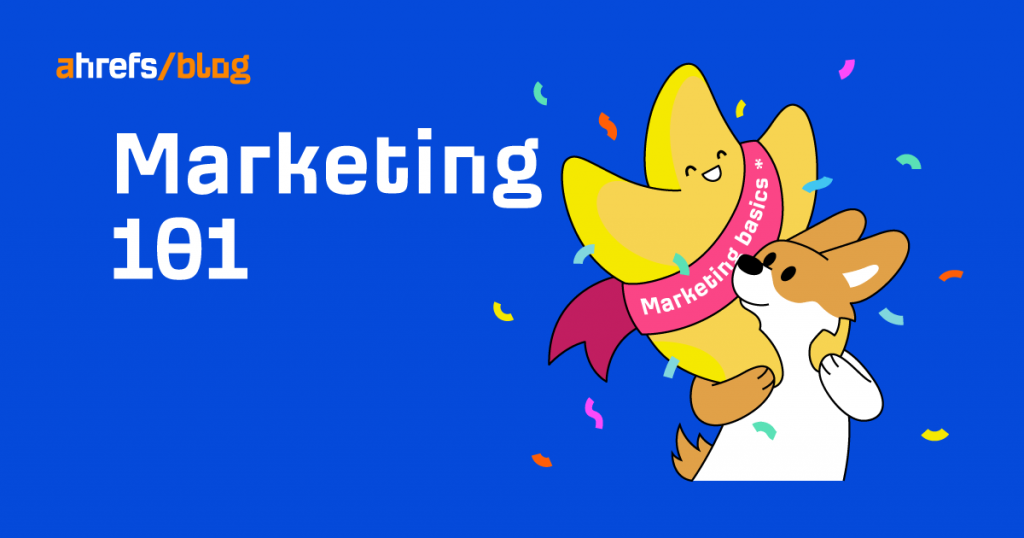[ad_1]
This article is an introduction to marketing for small-business owners, solopreneurs, and beginner marketers. Our goal is to help you understand the key concepts of marketing without unnecessary jargon.
This guide is going to be packed with information. But keep in mind that we’re only scratching the surface here. So feel free to follow the links to other articles that dive further into topics you’re most interested in.
But first, here’s what we’ll talk about:
Here’s how the American Marketing Association (which reviews the definition every three years to keep it timely) defines it:
Marketing is the activity, set of institutions, and processes for creating, communicating, delivering, and exchanging offerings that have value for customers, clients, partners, and society at large.
If that definition sounds a bit complex, here’s the gist of it. What this definition is trying to tell us is that marketing is not only about promoting something, but it’s also about creating desirable products and services and distributing them in a way that increases their attractiveness.
Businesses transfer (sell) goods or services to customers in exchange for value (money). Sounds easy. But here’s what can go wrong for a business:
- The customer may not know about the product/service.
- Even if they know it, they may not have a desire for it.
- Even if they know and have a desire for it, they may choose to buy from another business.
- Even if a business manages to go through all the steps to transfer its goods, the customer may not be satisfied enough to come back, buy again, or recommend the business to others.
Marketing is a business practice meant to address all those issues, such as generating awareness through generating desire, fostering customer loyalty, and encouraging advocacy. In other words, because marketing connects the business with its customers, there can be no sales without marketing.
So now we know what marketing is and why it is important. But what does marketing actually do? What are the main roles or key areas of marketing?
For decades, marketers have been answering these questions with the four Ps of marketing:
- Product – What you sell
- Price – How much you sell it for
- Place – Where you sell it
- Promotion – How you get customers
Let’s dig in.
Product
One of the roles of marketing is co-creating the product. In fact, this is where all marketing starts.
Every product development process needs to take market conditions into consideration. Things like who the customer is, what product features the market demands, who the competitors are, and how to do better than these competitors. We can answer these and similar questions during market research.
Discovering what to build is a critical stage in marketing and in business. That’s because it’s virtually impossible to effectively market a product that doesn’t fit the market. Conversely, a product that can satisfy an existing demand in a promising market doesn’t need complicated or pushy marketing tactics.
So, to give you a taste, here’s how Ahrefs (our product) matches against some fundamental questions that marketing answers in this area:

Price
A good price is one that your target audience can afford and makes your business profitable. This is easier said than done. But marketing is here to help.
Setting a price point arbitrarily is rarely a good idea. There are various ways marketers can inform executive decisions based on market insights. Here are some basic ones:
- Run a survey or conduct interviews with your target audience. You can discover what price will make people question the quality of a product and what price will make people deem the product too expensive for their wallets.
- Make comparisons with your competitors, aka benchmarking. If you set your price close to what your profitable competitors charge, you will likely get a pricing model that works in your market.
- Adjust for the psychological aspect of pricing, i.e., focus on what your price should communicate to your future customers. Make sure you’re not offering fewer benefits for the same price as your competitors. Or even worse, fewer benefits for a higher price. On a typical value proposition matrix, the best options are the ones highlighted in green:

Place
How and where customers will buy a product or service, i.e., place, is another factor that marketing influences (this happens even before we touch on promotion tactics).
Here, market research offers insights into important information, such as the customers’ shopping habits and competitors’ sales channels, to determine the optimal distribution model.
Have you ever wondered why some products are not directly available on the producer’s website? Or why do some types of software come in both digital and physical versions while others do not? That’s no coincidence. That’s marketing.
Here’s a quick rundown of some popular distribution models that marketers can choose from:

Promotion
Only after establishing sound fundamentals in the product, price, and place can marketers then focus on promotion. These are the tactics used to reach the target audience with a message. Think advertising, blog post creation, social media, email marketing, etc.
Marketers are usually associated with activities from this area of marketing—and this “image” is not wrong. Once the strategic components of marketing are in place, marketers spend most of their time working on promoting what their companies have to offer.
When planning promotion tactics, marketers need to know some things:
- Who are they trying to reach?
- What marketing channels work best?
- What is the typical buying journey of their prospects?
- What budget and staff do they need to achieve their goals?
For example, at Ahrefs, our core marketing tactic is content marketing. We’ve chosen to focus on this type of marketing because:
- Lots of people are searching on Google for solutions to problems our product solves. So if we create content that ranks high enough, people can find us through Google and learn about our product. (We’ll talk more about product-led content in the last section of this article.)
- If we can create content that ranks while “drinking our own Champagne,” we can send an authentic message about the quality of our product and the expertise of the people who build it.
In the next paragraphs, we’re going to focus on the promotion part of marketing. But if you want to read more about the four Ps of marketing, check out this guide.
OK, let’s move on.
Marketing is a process. Professional marketers are well aware that visitors don’t become customers immediately—at least not in every type of business. And marketers don’t argue with that fact. Instead, they take that into account and develop a “path” to convince people gradually.
It’s likely no other marketing concept conveys that truth better than the marketing funnel.
A marketing funnel is a system designed to attract customers (or clients) to a business. And then convert them. Gradually.
A typical marketing funnel consists of several stages of converting visitors into leads, then into customers, and then possibly into brand advocates.

Take these two tactics, for example.
A blog post about doing keyword research for SEO is likely to drive visits from search queries related to the topic, such as “seo keyword analysis” or “how to do keyword research.” This means that this content is a good way to generate awareness and interest about our brand and product, as people Googling these terms don’t need to know about us in the first place.

On the other hand, we have a landing page that compares Ahrefs to some of our competitors. Since it will be mostly visited by people who already know our product and are most likely in the market for an SEO tool, this is a proper tactic for the Consideration stage of the funnel.
The other important takeaway from the marketing funnel model is that marketing as a process doesn’t end after someone buys from you. If you want your customers to come back and make repeated purchases, it’s a good idea to keep people engaged after the “purchase” stage.
One of the ways to achieve this is to send out a regular newsletter to your mailing list. Datacamp, a code learning platform, aims to keep its users engaged by sending regular emails. They contain a “weekly goal” reminder and a curated list of resources. Here’s an excerpt from one of those emails:

Marketing is a business challenge that has more than one solution. These different solutions are the types of marketing. And these are not secrets in the industry—companies copy and remix them all of the time. The key lies in choosing the optimal combination of these types and using them well. Let’s take a look at some examples.
B2B and B2C marketing
These acronyms stand for business-to-business marketing and business-to-consumer marketing, respectively.
Marketers often differentiate these solutions because some tactics are more effective for marketing to businesses and others for marketing to consumers. Even the messaging style differs.
Here, we have an example of account-based marketing: A company uses emails to promote a new product feature. The emails were carefully targeted, sent only to accounts most likely to benefit from the new feature. Instead of urging prospects to “buy now,” the message is a case study of a solution to a business problem.

Below, we have a tactic often used in B2C marketing: influencer marketing. In this example, an influencer with 21.5K Instagram followers quite obviously advertises a food delivery company on her page. It’s a simple yet powerful message: If that company is good for me, it’s probably good for you too. Here’s a handful of discounts so that you can take action immediately.

Inbound and outbound marketing
Another pair of basic marketing types that can be used to describe most marketing tactics is inbound and outbound marketing. The first one is about “pulling the customer in” by, for example, providing helpful content to the prospect when they’re ready. The latter is about pushing the offering to the customer with an “interrupting” message, e.g., advertising.

For example, when we aim to attract new visitors with an article about email outreach, it’s inbound marketing (if people access the article via a search engine).

But when we launch a PPC marketing campaign with ads featuring the same article, that’s outbound marketing. This is because we’re reaching out to potential customers who may not necessarily be interested in us or ready to learn more.

Content marketing
Content marketing is the process of creating and distributing content to attract and retain customers. By content, I mean blog posts, podcasts, videos, infographics, ebooks, etc.
Promotion through content marketing usually involves satisfying a prospect’s need (e.g., the need to solve a problem at work, the need for entertainment, etc.) while giving exposure to the product or brand.
For example, Trader Joe’s (a grocery store chain) found a way to serve up helpful and entertaining content featuring everyday products that shoppers can find on its shelves. And it’s doing this in more than one way:

Trader Joe’s regularly generates three types of content in the Fearless Flyer food catalog that’s also distributed in print.
So not only does it go the extra mile and provide product information on neatly designed pages, but it also gives some inspiration on what to do with those products:

While sharing recipes for delicious meals, Trader Joe’s also promotes its products.
Take a look at this picture from one of its blog posts titled “Take a Dip Into the New Year” (pun intended). The main characters here are two ordinary jars of olives. But by showing them in the context of a delicious olive dip (there’s a recipe for it too), the olives now look exceptionally tasty to potential customers.

Through its…
[ad_2]


